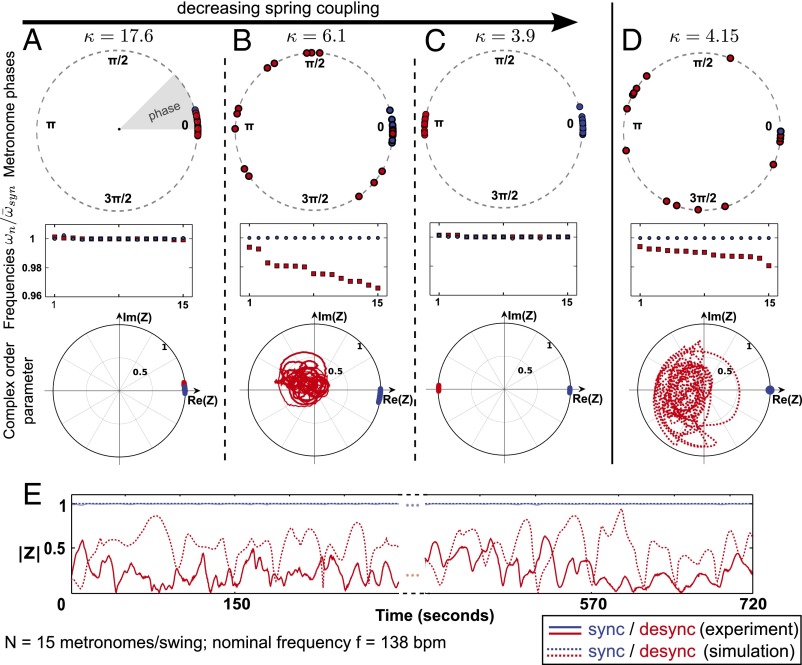Fig. 2.
Chimeras emerge with intermediate spring rate κ in a “competition” zone between two fully synchronous modes. With decreasing κ, we observe a transition from IP synchronization (A), over chimeras (B), to AP synchronization (C). The transition region also exhibits phase-clustered states and partial chimeras. (D and E) Simulations share all features of the experimental chimera. Data related to the synchronous and asynchronous populations are coded in blue and red, respectively. Angular frequencies are normalized with the average frequency of the synchronized population  . bpm, beats per minute.
. bpm, beats per minute.

